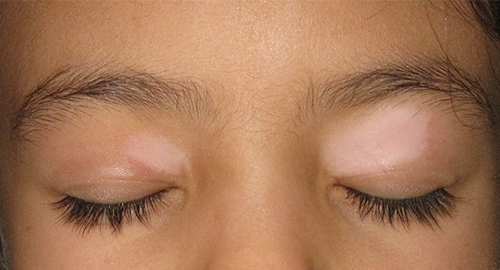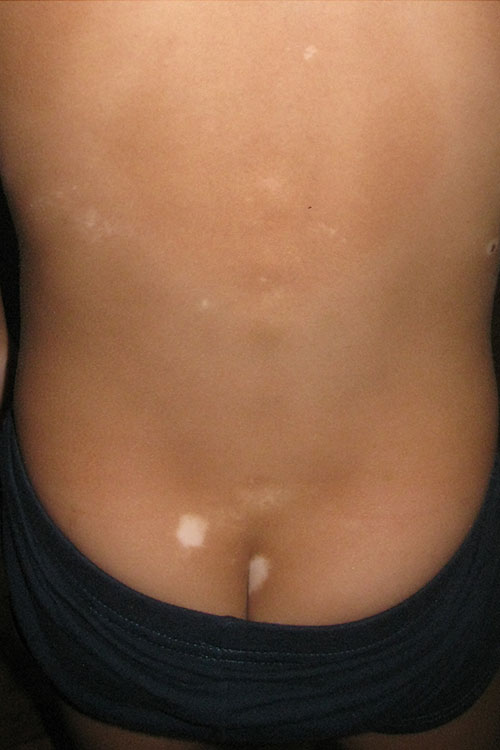Presentation of vitiligo
Vitiligo is characterised by complete pigment loss of the skin, which can be localised or widespread. Depigmentation is sharply circumscribed, often symmetrical, and most commonly affects the face, flexures, hands, feet, nipples, genitals, and sites of chronic repetitive skin injury. Follicular repigmentation or whitening of hairs (poliosis) are diagnostic. See here for photos of vitiligo. Eyes and ears may also be affected, impairing sensory functionAlikhan, 2011.
Vitiligo affects about 1% of the population. The cause of vitiligo is unknown, but likely to be multifactorial. It is associated with several autoimmune diseases (eg thyroid disease, diabetes, pernicious anaemia).

Note: Photo sourced with permission from Dr Susan Robertson.

Note: Photo sourced with permission from Dr Susan Robertson.

Note: Reproduced with permission from the A-Z of Skin [digital]. Australasian College of Dermatologists. Sydney. https://www.dermcoll.edu.au/
